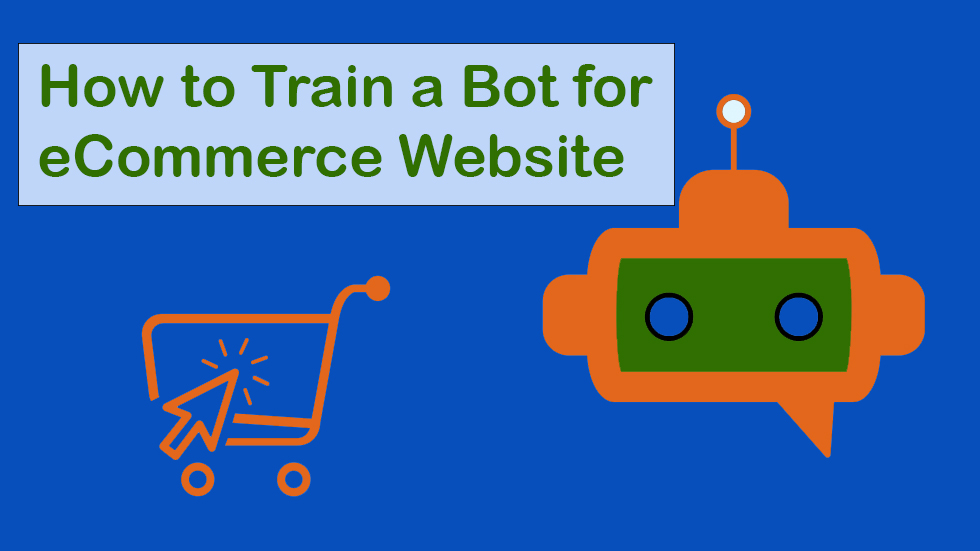Book Appointment Now

How to Train a Bot for Your eCommerce Website
The eCommerce world is becoming more competitive every day. Shoppers expect fast responses, personalized product recommendations, and smooth customer support—all available 24/7. That’s where a chatbot can help. But the real magic happens when you train your bot properly, so it can talk like a real sales assistant and guide customers through your online store.
Here’s a step-by-step guide on how to train a bot for your eCommerce website, with practical examples.
1. Define the Role of Your Bot
Not all bots do the same thing. Decide what role you want yours to play:
- Customer Support Bot – Answers FAQs like “What’s your return policy?” or “When will my order arrive?”
- Shopping Assistant Bot – Helps customers choose products, sizes, or colors.
- Sales Conversion Bot – Pushes offers, reminds customers about abandoned carts, and suggests discounts.
👉 Example: If your store sells clothing, your bot could act as a style assistant, suggesting outfits based on customer preferences.
2. Collect Real Customer Questions
Training starts with understanding what your customers actually ask. Look at:
- Emails to support
- Live chat logs
- Social media DMs
- Frequently Asked Questions (FAQs)
👉 Example: Suppose you sell electronics. Customers may ask:
- “How long does delivery take?”
- “Do you offer warranty on laptops?”
- “What’s the difference between iPhone 14 and iPhone 14 Pro?”
These real-life questions become the training data for your bot.
3. Write Clear and Friendly Responses
Bots should not sound robotic. Write answers in a human-like tone.
👉 Example:
❌ Bad: “Return policy: 7 days.”
✅ Good: “You can return your item within 7 days of delivery. Just make sure it’s in the original packaging, and we’ll process your refund quickly.”
This makes the bot more conversational and trustworthy.
4. Teach the Bot Different Phrases (Intent Training)
People ask the same thing in different ways. Your bot must recognize all variations.
👉 Example: For order tracking, customers might say:
- “Where’s my order?”
- “Track my package.”
- “Has my delivery shipped?”
- “Can I know my order status?”
All these should map to the same intent: order tracking.
5. Add Product Recommendations
One of the biggest advantages of eCommerce chatbots is upselling and cross-selling.
👉 Example:
Customer: “I’m looking for a gaming laptop under $1000.”
Bot: “Here are three gaming laptops within your budget. The Acer Nitro 5 is a popular choice, and customers often bundle it with a cooling pad. Would you like me to show you the bundle?”
This approach boosts sales naturally.
6. Connect the Bot to Your Store Backend
A smart bot should be connected to your:
- Inventory system (to check stock levels)
- Order system (for tracking)
- CRM/Email system (to remember customer preferences)
👉 Example: If someone asks: “Do you have size M in stock for the red jacket?”
The bot should pull real-time data from your inventory and reply instantly.
7. Use a Bot Platform with Training Capabilities
Some popular options are:
- Dialogflow (Google)
- Microsoft Bot Framework
- Rasa (open-source)
- ChatGPT API with custom training
Each lets you train bots with examples, intents, and responses.
8. Test with Real Conversations
After building, don’t just launch it blindly. Test the bot with a small group of users.
👉 Example: Pretend to be a customer and ask tricky questions like:
- “Do you sell phones with the best camera under $500?”
- “Can you show me something similar to the last product I viewed?”
- “I don’t like this item, how do I exchange it?”
See how the bot responds, then refine it.
9. Keep Training and Improving
A bot is never “done.” Customer behavior changes, and so should your bot. Regularly update it with:
- Seasonal promotions (e.g., “Back to School Sale: 20% off backpacks!”)
- New product lines
- Updated policies
👉 Example: During the holiday season, you can train your bot to say:
“Our Christmas sale is live! Do you want to see the top 10 gift ideas under $50?”
Final Thoughts
Training a bot for your eCommerce website isn’t just about automation. It’s about creating a virtual sales assistant that can:
- Answer questions instantly
- Recommend products intelligently
- Build customer trust
- Boost sales
A well-trained bot can turn visitors into buyers, reduce support costs, and give your customers the 24/7 shopping experience they expect.
✨ Pro Tip: Start small—train your bot on the top 20 customer questions, then expand gradually. Over time, your bot will learn and become smarter, just like a real employee.

